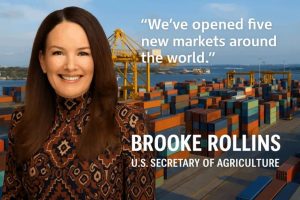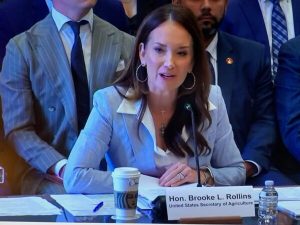
Dozens of House Democrats are demanding that the U.S. Department of Agriculture offer nondairy options such as soy milk in the lunch line. They say non-White students suffer from lactose intolerance at a disproportionately high rate and that offering lactose-free milk does not go far enough.
“Our inattention to the health effects of lactose-intolerance and dairy allergies combined with the near-exclusive offering of dairy to minority students is a textbook example of dietary racism,” more than 30 House Democrats recently wrote to the USDA Equity Commission. “There would be reprisals if the United States were to put a product on the trays of White kids that caused potentially widespread adverse reactions. The USDA and other federal actors, including Congress, should take immediate remedial action.”
Lactose intolerance disproportionately impacts communities of color, including 80% of Blacks and American Indians and 90% of Asians, according to Boston Children’s Hospital.
Lactose intolerance symptoms vary based on the level of tolerance and the amount of dairy consumed. Symptoms include nausea, hives, stomach pains, vomiting, diarrhea or anaphylaxis, making breathing difficult.
Students have the option to choose water over milk. Lactose-free and reduced-lactose milk are also acceptable substitutes under the law but are not consistently offered because it comes at an additional cost that the federal government does not reimburse.
Alternatives to cow’s milk, such as soy, are even harder to come by because they require a doctor’s note under current law, creating another barrier for those in minority and underprivileged communities.
“Lactose-free milk provides the same essential nutrients as fluid cow’s milk in each serving. USDA acknowledges, however, that lactose-free and lactose-reduced milk is more costly than regular milk, and there is currently no additional federal reimbursement to support its service,” a USDA spokesperson said in a statement. “Congress is responsible for establishing the federal reimbursement rates for school meals.”
Less than 40% of school nutrition directors reported that lactose-free milk was offered consistently in their school districts, according to the School Nutrition Association’s 2018 nutrition report, the most recent data available.
Democrats say soy milk is the preferred alternative because lactose-free milk can still cause side effects for those who are lactose intolerant.
Although the government has recognized soy milk as nutritionally equivalent to cow’s milk, nondairy alternatives are more difficult to procure. Less than 27% of schools consistently offered soy milk, 6.9% offered almond milk and 2.8% offered rice milk, according to the 2018 nutrition report.
“These many children who cannot safely or comfortably consume dairy are being forced to accept containers of cow’s milk on their lunch trays by schools who fear losing funding because USDA only reimburses them for beverages at the ‘milk rate,’” the House Democrats wrote to the USDA.
Rep. Troy Carter of Louisiana, who led the letter, did not respond to a request for comment.
The Democrats also cited wasted government spending as an additional reason to offer soy. They cited a 2019 USDA report estimating that taxpayers help subsidize some $300 million each year in unopened, discarded milk from school lunches.

























